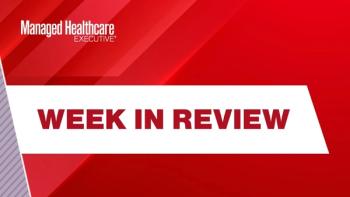
Five pharmacy regulations health execs must keep on their radars in 2017
Here are five critical regulations that executives can begin to prepare for today.
With the first couple of months of 2017 behind them, many in the healthcare industry remain uncertain as to what regulatory challenges they may face as the year unfolds. The debut of the American Health Care Act, proposed by House Republicans on March 6 to replace the Affordable Care Act (ACA), has some optimistic about new reimbursement rates, others bracing for potential regulatory whiplash, and many more just waiting to see what might be passed into law, and when.
Regardless of what lies ahead, it’s imperative for healthcare professionals at all levels, and particularly those in strategic positions, to keep a close eye on regulatory updates as they occur and to think critically about their potential impact on their businesses and patients. These savvy leaders needn’t wait for an update from Washington to start, however; there are several critical regulations, which have, at least somewhat, more certain futures, that they can begin to prepare for today.
In the pharmacy department alone, the most significant of these include:
1. USP
2. USP <800> Hazardous Drugs-Handling in Healthcare. USP <800>-which defines hazardous drug containment processes to promote patient safety, worker safety, and environmental protection-was approved and passed in February 2016. Health systems have now had a year to implement the sweeping changes-which, in some cases, require complete redesign of clean rooms and HVAC systems to maintain appropriate environmental controls (a project that may cost $500,000 or more to implement), but the clock is ticking. By July 1, 2018, the new rules will be enforceable by multiple regulatory agencies, and many hospitals aren’t ready. Recently, at the 51st Midyear Clinical Meeting and Exhibition of the American Society of Health-System Pharmacists in Las Vegas, an audience poll found that while 12% of attendees were already in full compliance with USP <800> standards, 20% reported their organizations were “in trouble.” Healthcare systems still have time to adapt their budgets and operational plans to accommodate these changes, but only if they act now, the closer they get to the deadline, the higher the chance that they’ll not only have to complete these activities anyway, but that in the meantime, they’ll also jeopardize patient safety and face regulatory action.
3. MM.09.01.01-Antimicrobial Stewardship Standard. As of January 1, 2017, the Joint Commission requires all accredited hospitals, critical access hospitals, and nursing care centers to have an antimicrobial stewardship program. The new standard follows growing concerns over antibiotic resistance, as evidenced by former President Obama’s action plan to combat the rise of antibiotic resistant bacteria in 2015, and many experts’ assertions that the existence of such “superbugs” has reached epidemic levels. Health systems have flexibility in terms of what these programs look like-depending on their size and scope -but all organizations are likely to face challenges related to identifying the appropriate leaders to establish the program, pulling together an interdisciplinary team to ensure its adherence, and allocating appropriate staff to the initiative while providing adequate coverage for other essential duties. Some hospitals have even identified a need to hire additional staff for the program, particularly those with expertise in infection prevention. While the Joint Commission had provided health systems a “grace period” of six months to ramp up and demonstrate results, there will continue to be more and more oversight in this space, and CMS recently suggested it will soon use antimicrobial stewardship as a criterion for Medicare participation. Fortunately, there are many great resources for health systems committed to implementing a successful program: as one example, the
4. FDA 503A and 503B-Compounding. Three years after the enactment of the Drug Quality and Security Act, regulatory experts may have noticed the FDA was relatively busy in 2016, publishing guidances on a variety of subjects, including for 503A (most health system pharmacies) and 503B (registered outsourcing) facilities. While this is a broad topic, and health systems are encouraged to take a close look at the multiple guidances to determine what changes may affect them, there are a couple with widespread impact. For example, with the updated guidance, h
5. 340B Mega-Guidance Withdrawn. On Jan. 31, 2017, the Department of Health and Human Services, in response, many believe, to President Trump’s “two-for-one” plan to eliminate two old regulations for every new one that’s added, announced it had withdrawn the final 340B mega-guidance from White House review. The 340B Drug Pricing Program is a U.S. federal government program which requires drug manufactures to provide outpatient drugs to certain health care organizations and covered entities at reduced prices. In August 2015, The Health Resources and Services Administration (HRSA) proposed
Kenneth Maxik is director of patient safety and compliance for
Newsletter
Get the latest industry news, event updates, and more from Managed healthcare Executive.

















































